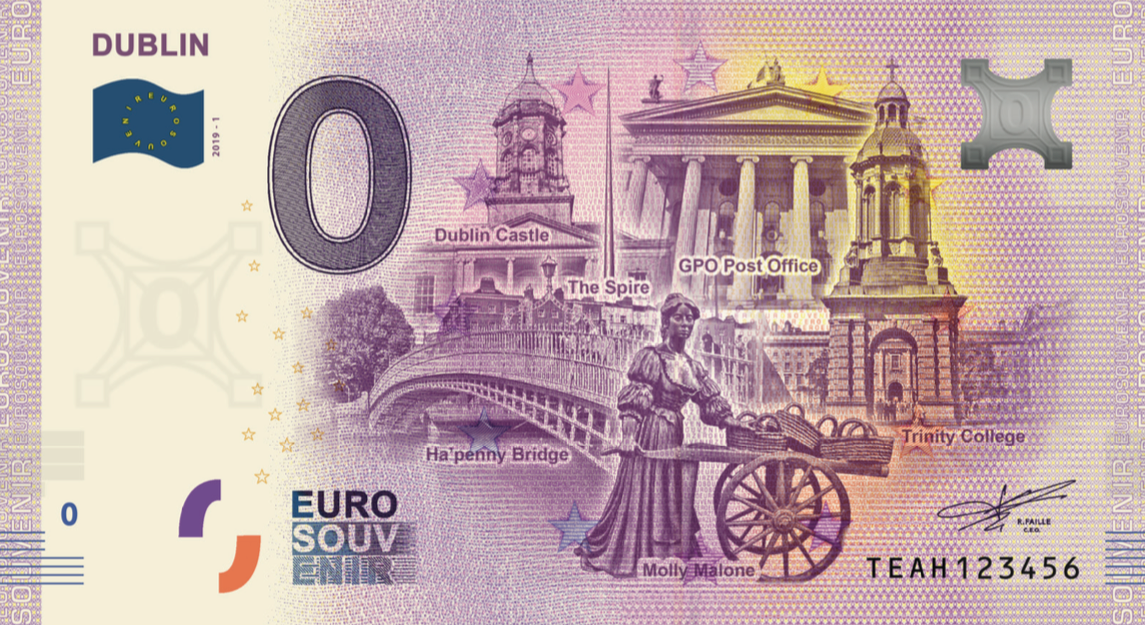
New Release in June: "Dublin" 0 Euro Banknote
The third 0 Euro Banknote of the new releases is titled "Dublin". It is a collage of some of the most iconic, best-known landmarks in Dublin. And it looks really beautiful and is a unique keepsake for everybody who has visited Dublin and who has seen all those places.
Find here a list of the attractions, along with some information about them from Wikipedia. To read more, just follow the links that bring you to the respective wiki page. The banknote can be ordered in our online shop.
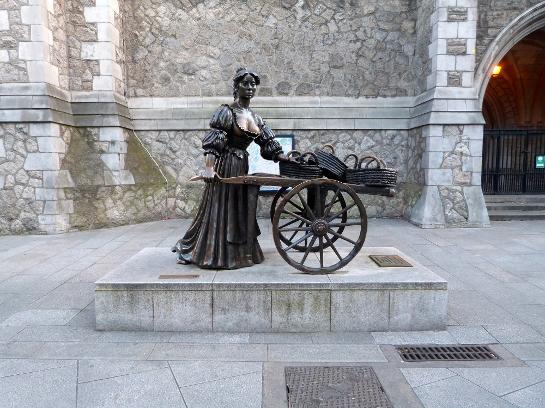
Molly Malone Statue
The Molly Malone statue in Grafton Street was unveiled by then Lord Mayor of Dublin, Alderman Ben Briscoe, during the 1988 Dublin Millennium celebrations, when 13 June was declared to be Molly Malone Day. The statue was presented to the city by Jury's Hotel Group to mark the Millennium. On 18 July 2014, the statue was relocated to Suffolk Street, in front of the Tourist Information Office, to make way for Luas track-laying work to be completed at the old location. Due to the increase in tourist foot traffic, and a common penchant for being "handsy", the statue has been groped often enough that the bronze hue has begun to wear off on the bosom.
Ha'penny Bridge
The Ha'penny Bridge (Irish: Droichead na Leathphingine, or Droichead na Life), known later for a time as the Penny Ha'penny Bridge, and officially the Liffey Bridge, is a pedestrian bridge built in May 1816 over the River Liffey in Dublin, Ireland. Made of cast iron, the bridge was cast in Shropshire, England. Originally called the Wellington Bridge (after the Dublin-born Duke of Wellington), the name of the bridge changed to Liffey Bridge. The Liffey Bridge (Irish: Droichead na Life) remains the bridge's official name to this day, although it is most commonly referred to as the Ha'penny Bridge.
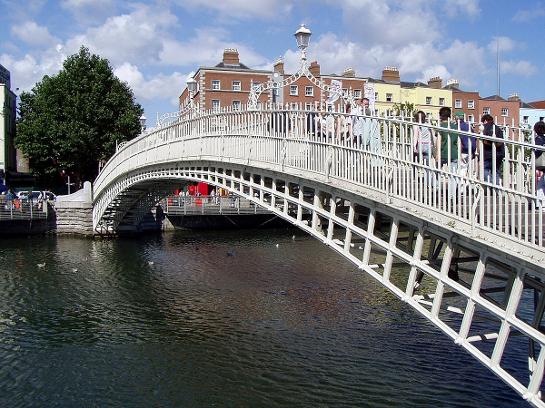
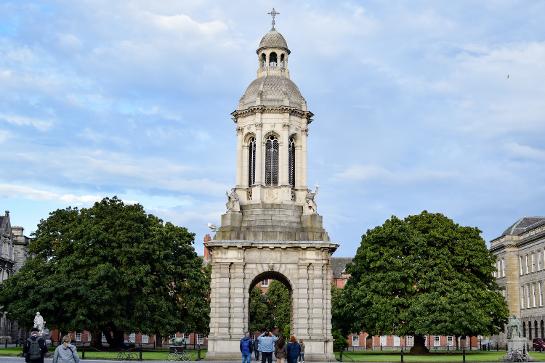
Trinity College Dublin
Read More
General Post Office (GPO) Dublin
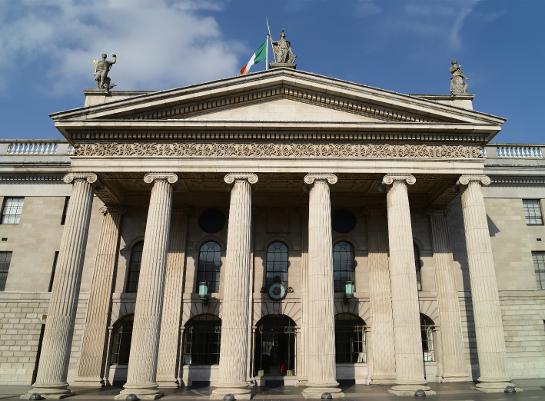
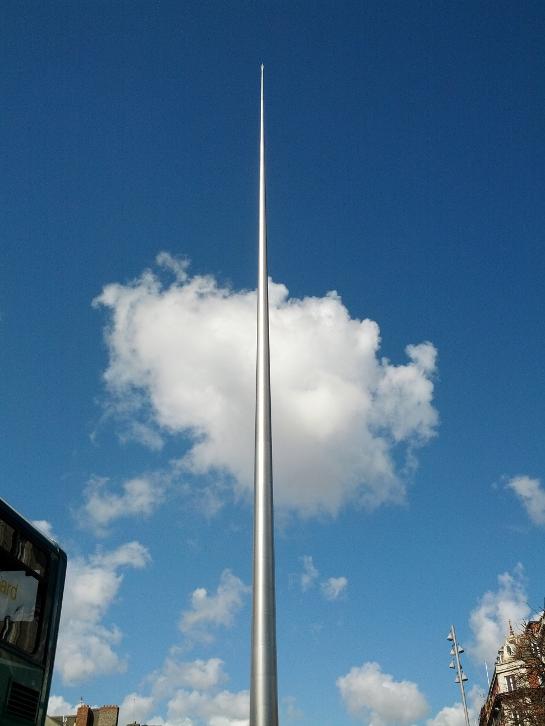
The Spire of Dublin, alternatively titled the Monument of Light (Irish: An Túr Solais), is a large, stainless steel, pin-like monument 120 metres (390 ft) in height, located on the site of the former Nelson's Pillar on O'Connell Street in Dublin, Ireland.The spire was designed by Ian Ritchie Architects, who sought an "Elegant and dynamic simplicity bridging art and technology". The contract was awarded to SIAC-Radley JV and it was manufactured by Radley Engineering of Dungarvan, County Waterford, and erected by SIAC Construction Ltd & GDW Engineering Ltd.
The first section was installed on 18 December 2002. Construction of the sculpture was delayed because of difficulty in obtaining planning permission and environmental regulations. The Spire consists of eight hollow stainless steel cone sections, the longest being 20 m (66 ft), which were installed on 21 January 2003. It is an elongated cone of diameter 3 m (9.8 ft) at the base, narrowing to 15 cm (5.9 in) at the top. It features two tuned mass dampers, designed by engineers Arup, to counteract sway. The steel underwent shot peening to alter the quality of light reflected from it.
Dublin Castle
Dublin Castle (Irish: Caisleán Bhaile Átha Cliath) is a major Irish government complex, conference centre, and tourist attraction. It is located off Dame Street in Dublin, Ireland.
Until 1922 it was the seat of the British government's administration in Ireland. Most of the current construction dates from the 18th century, though a castle has stood on the site since the days of King John, the first Lord of Ireland. The Castle served as the seat of English, then later British, government of Ireland under the Lordship of Ireland (1171–1541), the Kingdom of Ireland (1541–1800), and the United Kingdom of Great Britain and Ireland (1800–1922).
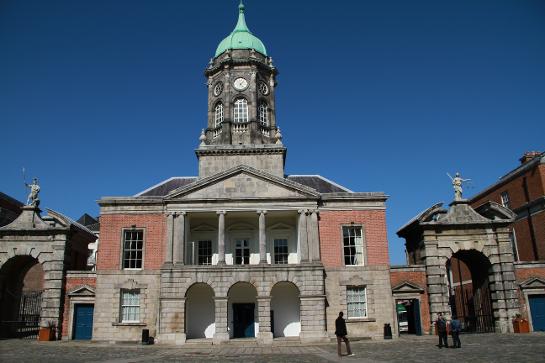
© Copyright Euro Note Souvenir LTD